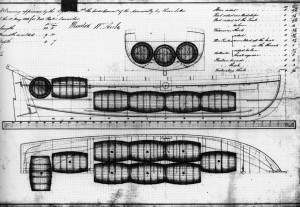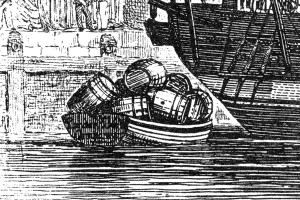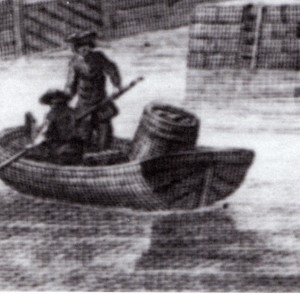 Looking through La France Maritime au Temps de Louis XV et Louis XVI: Gravures et dessins des frères Ozanne. Peintures de Joseph Vernet by Alain Boulaire (ISBN 2-911468-75-9), there are many images with barrels. It seems fair to say that there is no one way to transport barrels — they were loaded as people thought convenient, and not always with the head or bilge down.
Looking through La France Maritime au Temps de Louis XV et Louis XVI: Gravures et dessins des frères Ozanne. Peintures de Joseph Vernet by Alain Boulaire (ISBN 2-911468-75-9), there are many images with barrels. It seems fair to say that there is no one way to transport barrels — they were loaded as people thought convenient, and not always with the head or bilge down.
The first image (p. 60), show a barrel on its head in the stern of a boat.
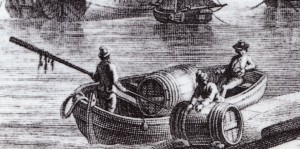 The second image (p. 68) shows a barrel resting on its bilge on the thwarts. I always prefer to get the center of gravity lower, and I can’t decide if the barrel is in the process of loading or unloading, or they would rather have the easier time of moving it from the thwarts than of lowering it and raising it.
The second image (p. 68) shows a barrel resting on its bilge on the thwarts. I always prefer to get the center of gravity lower, and I can’t decide if the barrel is in the process of loading or unloading, or they would rather have the easier time of moving it from the thwarts than of lowering it and raising it.
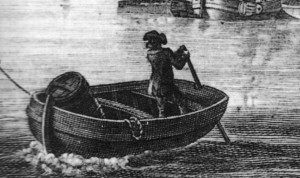 Here (p. 77) the barrel is in the bows of the boat with the bilge of the barrel resting on the stem of the boat.
Here (p. 77) the barrel is in the bows of the boat with the bilge of the barrel resting on the stem of the boat.
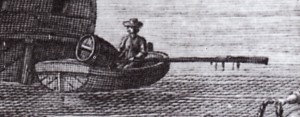 Another (p. 87) barrel high up on the thwarts.
Another (p. 87) barrel high up on the thwarts.
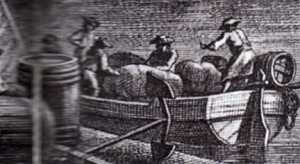 This image is on the fold of pages 96 and 97. The barrel is half off the edge of the stern.
This image is on the fold of pages 96 and 97. The barrel is half off the edge of the stern.
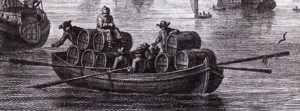 Lastly (p. 97) is a boat full of barrels, stacked neatly in the bow and stern.
Lastly (p. 97) is a boat full of barrels, stacked neatly in the bow and stern.
